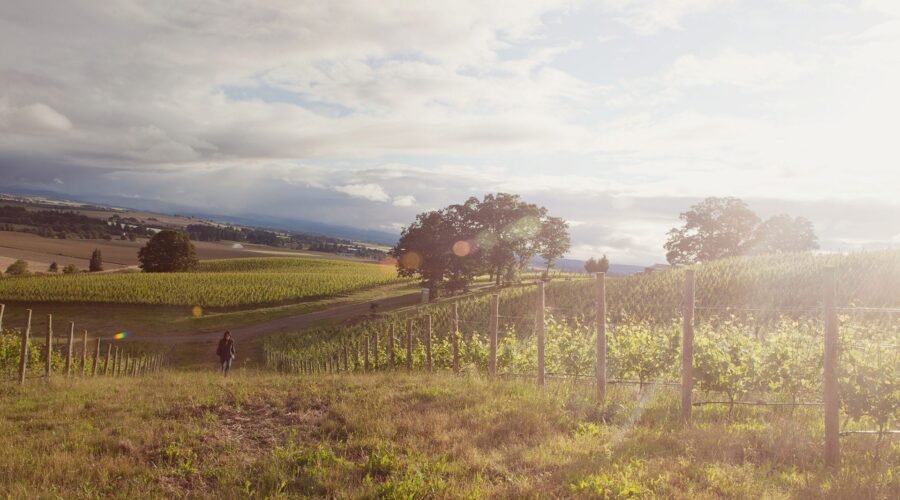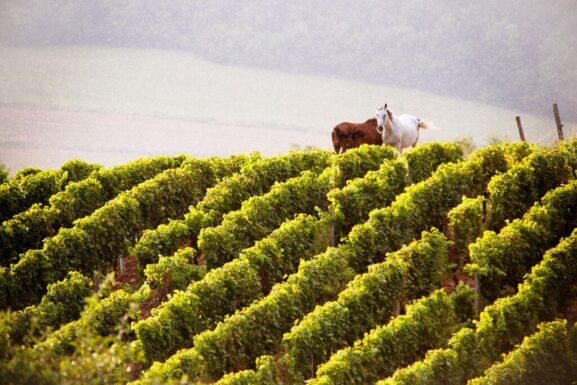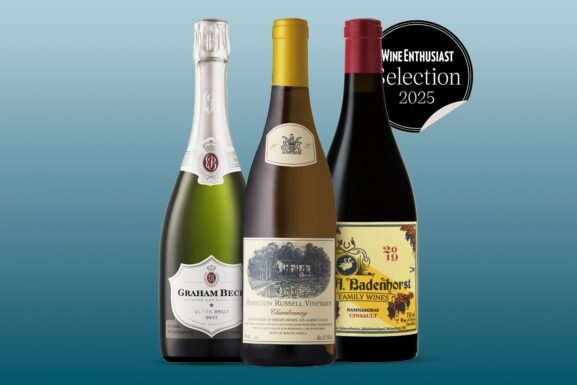Is Terroir a Myth? | Wine Enthusiast
The more I’ve talked to Maggie Harrison, the revered Oregon winemaker who’s waging a “war on wine,” per a fascinating profile in the New York Times Magazine, the more I’ve begun to see two worlds of wine. The physical world, where vines are grafted, watered and harvested at precisely the right time on hyper-specific dirt. And the metaphoric, mythic world, where we turn this grapestuff into God. Or at least into a really good story.
Harrison’s winery Antica Terra puts out a few hundred bottles a year and has a years-long wait list borne out of a combination of being delicious, the principles of supply and demand and her unusual winemaking method. She has synesthesia, a condition in which the sight of a number might come with a color. The number “two,” for example, boasts a light blue aura around it. (My cousin has synesthesia, too, and she’s very good at math.) Harrison uses her sensory symphony, and decades of experience, to blend incredible wines. She assembles over 100 samples from her vineyards and others in the region to blend blindly, assigning each a number to keep them organized. As she blends with her team, the colors she sees blend, too. She tastes and tastes and tastes, and after 10 days of experimentation, the blend is decided. Onto the next one.
You May Also Like: The Prehistoric Roots of Volcanic Terroir
The story of her wines then becomes about her, and this method, while the rocky landscape where her small plots of vines eke out grapes in the Willamette Valley is just a buzz in the breeze. When Harrison suggests “terroir is a myth,” almost everyone hears it differently than what she means. Provocative, confusing—at first it sounds like she’s suggesting that the geography behind her bottles is moot. Or that the regional markers of the rocky, nearly impenetrable ground where she plants don’t biologically transport from the vine’s cell walls to our taste buds, which scientists love to study. Nope. Not what she means.
“Those four words are far too reductive to really express what I mean,” Harrison tells me over the phone. “I don’t mean terroir is a myth as in, a falsely held belief, but rather a myth as in a way of explaining an otherwise unexplainable phenomena.”
The unexplainable phenomena: Why is wine so damn good?
“Terroir is not enough. And yes, it exists,” she continues. “But it’s just not the whole of the alchemy and the equation of what makes the resultant wine taste and feel the way that it does.”
What shapes the wine is a winemaker. The grapes are nature, but they need to be nurtured to become their best self. A tale as old as time. “I have two children,” says Harrison. “They came to me fully formed, they are marked by their specific DNA. And yet, I still can screw them up in 10,000 different ways, and they will spend the rest of their lives in therapy talking about all of the things I did…”
When we talk about terroir, we (often) turn it into a legend that shapes our expectations and experience of the wine—too much, in her opinion. An overzealous wine shop employee might wax poetic on volcanic soil so enthusiastically you begin to see lava steaming out of their ears. This, and the phrase “low intervention” irks Harrison.
“Terroir is an invitation to investigate the relationship between craftsperson and materials and muse, whatever that is,” she says. “What I bristle at, what I think is frustrating, is when we take the human out of the equation… I don’t understand our collective need to remove humans, or that we call any of the work that humans play ‘intervention.’ We don’t talk about any other craft in that way.”
You May Also Like: What Lies Beneath: How Geology Is Transforming South American Winemaking
The grapes don’t shimmy off the vine and cannonball into a fermentation vessel. And yet the glowing narrative in the natural wine world at the moment, generally speaking, makes it seem as if they do.
Now don’t get all hot and steamy yourself just yet. I find that tossing Harrison’s idea into the world makes for lively conversation, no matter how much the crowd knows about wine. At a recent wine tasting at Spencer, my wonderful local wine shop in Ann Arbor, Michigan, a group of us sat around a few tables pushed together and tried a few Clos Saron wines from California’s Sierra Foothills while we tried to untangle Harrison’s hypothesis.
“So would Maggie Harrison say this wine has no terroir?!” exclaimed a taster wearing a tailored outfit that suggested he works in an actual office. Throughout the discussion, it felt like Harrison’s name was invoked in italics. “Not exactly…” I moaned. “It’s more like, don’t give the soil all the credit for why this wine is great, let’s give some credit to the winemaker, too.”

The more I explained her reasoning, the tamer her take became. Still, I needed to consult an all-knowing professor-type to see the forest for the trees.
“I don’t think anybody, not even fervent believers in terroir—a category in which I would put myself—disputes that,” says Eric Asimov, the New York Times wine critic, who in conversation tells it to me straight, including that our connection is making an annoying echo. “No educated wine person in the 21st century believes that terroir magically confers anything on a wine. All that terroir offers is potential.”
In Asimov’s definition, terroir isn’t just the influence of a place on a wine, but the cultural context and community around it, too. Slightly varying definitions, like this one, also highlight why terroir has become such a hot topic. But, he adds, while Harrison’s winemaking approach is unusual, her method of blending isn’t that wild.
“Every wine is blended,” he says. “Even in Burgundy, a typical plot or vineyard is on a slope, and the character of the grapes on the top of the slope is going to be different than the character of the grapes lower down. You might have older vines and younger vines, which will offer different character. The winemaker is almost always making decisions about how to express the character of a particular place.”
You May Also Like: The Why, When and How of Wine Blending
This is when I begin to wonder if we’ve moved too far into the weeds of terroir, if this conversation is ultimately a lot of talking about the talking about wine, when maybe we should all be sitting around drinking it instead.
Back at the Clos Saron tasting, Spencer’s co-owner Steven Hall introduced each wine with a description of the soil where it was grown. Some were from vines that emerged from decomposed granite and clay, rolling hills at lower elevation, a quarter-acre forest plot that is frequently blanked with low-lying ground fog. I could almost see it lofting from the glass of earthy Pinot Noir. But by even hosting an entire tasting dedicated to one winemaker, we were doing what Harrison would love, which is celebrating the wine as much as the craftsperson. Sure, we learned how granite gave a Syrah blend, 2016’s Stone Soup, rustic tannins with tangy acidity.
The wine’s atypical twists and turns (“is that incense?” I wrote in my notes), said Hall, reflect both the terroir and the work of winemaker Gideon Beinstock. He didn’t just wave his hand over the barrel of aging grapes, muttering a spell.
Published: February 16, 2024


